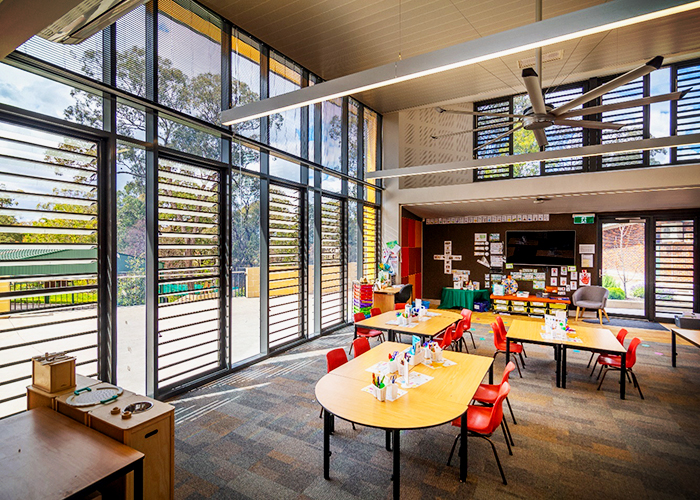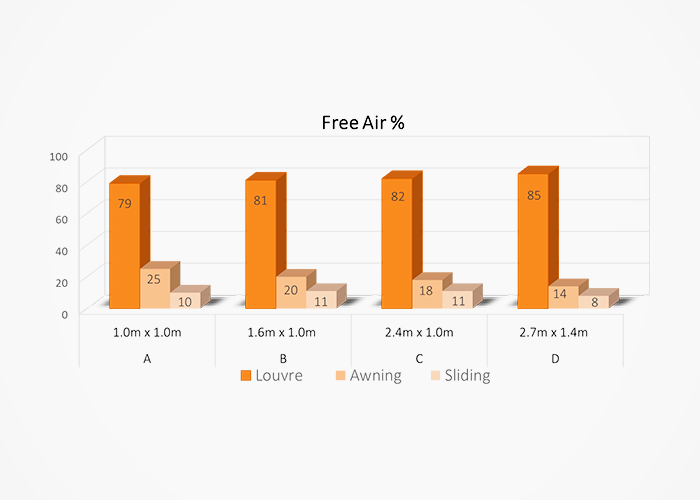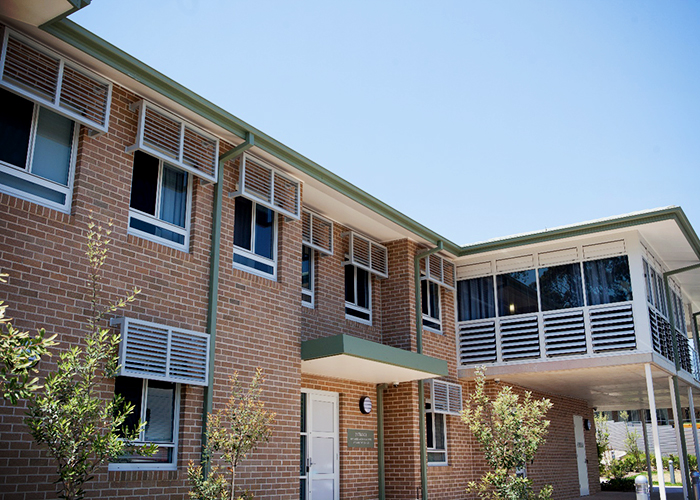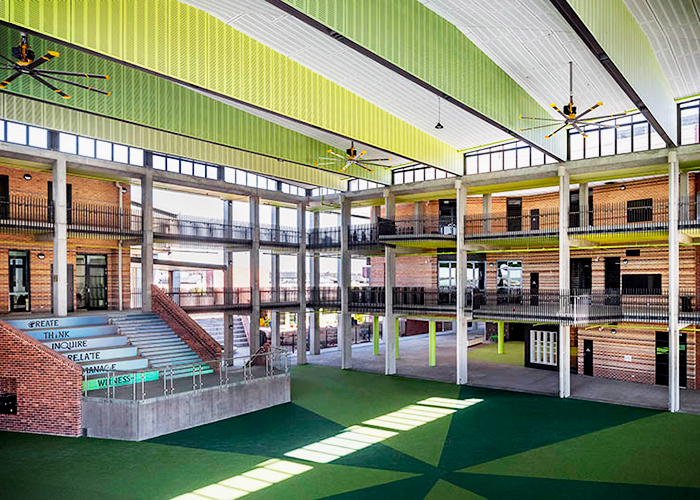Specify Energy-efficient Windows from Safetyline Jalousie Why Low Air Infiltration Matters in Specifying Energy-efficient Windows Australia is famous for its diverse weather conditions and climate zones, which make balancing occupants' thermal comfort and staying energy efficient in indoor spaces throughout the year a challenge for both builders and architects. Free air flow and passive ventilation through window specification and placement have widely been acknowledged as important factors to achieve such goals. When it comes to natural ventilation, louvre windows provide up to 86% free air flow. The result is four to eight times higher than that of awning or sliding windows, as indicated in the graph below. However, free air flow is just half of the story when choosing energy-efficient windows. Following the application of the NCC 2019, stronger focus and recognition is now placed on another comparatively vital element - air infiltration. 
What is Air Infiltration? According to the U.S. Department of the Interior, air infiltration (or air leakage) is the exchange of air through cracks and gaps in the outside shell of a building. Infiltration increases heating and cooling costs, devastates the building envelope and adversely affects occupants' thermal comfort. Regarding window placement, air leakage likely occurs through cracks between window assembly components as well as window-wall joints. Air infiltration, however, should not be mistaken as a problem of ventilation. According to Elron Burrell, functioning ventilation allows air flow where it is designed to do so and helps circulate plentiful fresh clean air at comfortable temperature for people inside a building. In case of air infiltration, air movement is not controlled, less reliable and wasting energy, especially when heating and cooling systems are operational. So how do architects and builders tackle the issues of air infiltration while allowing an abundance of natural, free air flow? The answer lies partly on specifying energy-efficient windows which have tight sealing, strong weatherstripping, high free air and low air infiltration. That is where Safetyline Jalousie high performance louvre windows can help! 
The Benefits of Specifying Safetyline Jalousie High-performance Louvre Windows Safetyline Jalousie louvre windows offer architects and builders with added value and unrivalled performance in terms of strength, flexibility, reliability, versatility and energy efficiency. When fully open, louvres allow up to 86% free air flow - more than any other window types on the market. Safetyline Jalousie louvres are sealed on all four sides with Marine Grade EPDM seals on each horizontal transom and gaskets on the upright sections. The superior sealing capability ensures air infiltration of only 0.12 L/m2.s - this is 12 times lower (and better) than a conventional glass on glass louvre window. High free air and low air infiltration are key features for Safetyline Jalousie louvres to offer:
Did you know? A gap only 1mm wide will allow enough unintended airflow to carry 360g of water per day into the building envelope, according to Passipedia.

Louvre Performance Analysis Via Inhabit Group Modelling To further prove these performance ratings and the importance of choosing high free air, low air infiltration windows, Safetyline Jalousie has reached out to Inhabit Group for modelling and scenario testing of learning spaces. Table 1: Façade Airtightness Data Modelled by Inhabit Group
It is proven that Safetyline Jalousie louvres have a much higher airtightness figure than the generic louvres tested or indeed the requirements of NCC 2019. As a result, the façade airtightness of the tested building is increased by up to 20%. Less air changes per hour also allow for a much tighter control over indoor air quality. It is worth noting that the airtightness benefit of Safetyline Jalousie louvres increases as the percentage façade area increases. In addition, Inhabit Group's modelling indicates that Safetyline Jalousie louvre windows can improve thermal comfort levels for occupants, decrease energy usage and costs, and ultimately reduce greenhouse gas emissions for the operating life of the project. The Final Word As part of the National Energy Productivity Plan (NEPP), the Australian Government has also made changes to energy efficiency-related provisions to reduce emissions by 26-28% on 2005 levels by 2030. However, in 2019 The United Nations (UN) reported that Australia was not on track to meet them. It is more important now than ever for the built industry to prioritise energy-saving, environmental-friendly materials for greener, healthier living environments. By choosing energy-efficient windows with high free air and low air infiltration like Safetyline Jalousie louvres, architects and builders can witness a huge leap in the project outcomes while contributing to the national achievements of sustainability. Should you need further consultation and technical advice on smarter, greener ventilation solutions, do not hesitate to contact Safetyline Jalousie team.
|
1300 86 3350 3/11-17 Wilmette Place, Mona Vale NSW 2103
|


 SJ Espacer Large-Format Louvre Windows
SJ Espacer Large-Format Louvre Windows High-Performance Louvres for Modern
High-Performance Louvres for Modern Factors to Consider for Window Safety
Factors to Consider for Window Safety Benefits of Louvre Windows for Coastal
Benefits of Louvre Windows for Coastal Louvre Windows with Weather Seal by
Louvre Windows with Weather Seal by How to Maintain Louvre Windows by
How to Maintain Louvre Windows by Operable Louvre System by Safetyline
Operable Louvre System by Safetyline Louvre Windows for Cyclone-Prone Areas
Louvre Windows for Cyclone-Prone Areas Floor-To-Ceiling Aluminium Louvre
Floor-To-Ceiling Aluminium Louvre Importance of Louvres for Indoor Pools
Importance of Louvres for Indoor Pools Aluminium vs Glass Louvres by Safetyline
Aluminium vs Glass Louvres by Safetyline Louvre Windows for Coastal Properties
Louvre Windows for Coastal Properties Safety Glass for Louvre Windows by
Safety Glass for Louvre Windows by Advantages of Louvre Windows for Schools
Advantages of Louvre Windows for Schools SmartAir System by Safetyline Jalousie
SmartAir System by Safetyline Jalousie SJ Espacer Tested To Australian Standard
SJ Espacer Tested To Australian Standard Safetyline Jalousie's New ArchiCad
Safetyline Jalousie's New ArchiCad Thermally Broken Louvre System by
Thermally Broken Louvre System by Eco Friendly Louvre Windows for Shopping
Eco Friendly Louvre Windows for Shopping Charcoal Framed Louvre Windows at
Charcoal Framed Louvre Windows at
